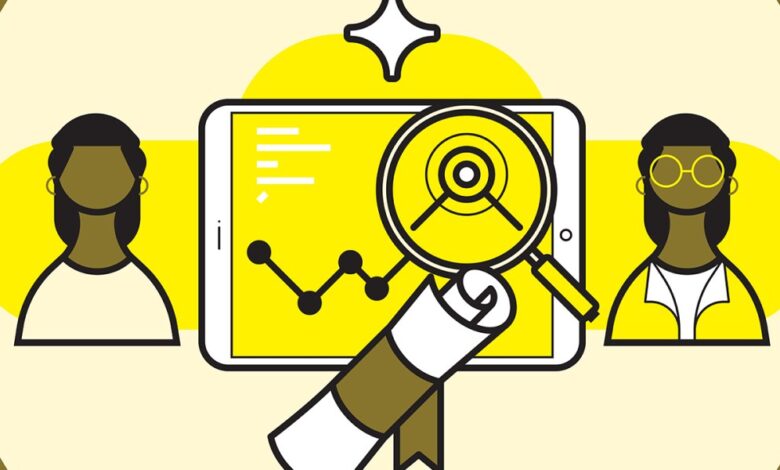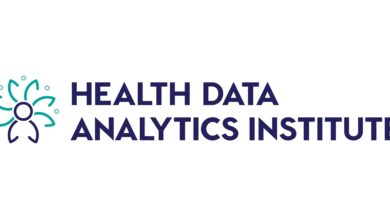How to become a data analyst

This year, people are forecasted to produce 147 zettabytes of internet data. For reference, that amount of data would fill up around 147 billion fully upgraded iPhone 15 Pro Maxes. And if you stacked them, the tower would be the length of more than half the circumference of the Earth.
Next year, internet data is expected to grow to 181 zettabytes, according to a study by Statista.
ADVERTISEMENT
Berkeley’s Data Science Master’s
Master Key Skills in Data Mining, Machine Learning, Research Design & More
Visit WebsiteThis data explosion parallels the demand for data analysts who can translate raw information into something understandable. Allied Market Research reports that the big data and business analytics market as a whole is projected to be worth around $665.7 billion by 2033, almost three times what it was in 2023.
Dan Hall, Chief Data and Insights Officer at LevLane Advertising, thinks curiosity is the key to unlocking a career in data analytics. “That’s what will drive you in any aspect of your career. When you’re in data, you want to know more than what the numbers are telling you. You want to know why.”
What does a data analyst do?
Data analysts are like detectives who deal with numbers. They collect, clean, and interpret information to help CEOs and businesses solve problems and make informed decisions.
By asking questions like “What are the numbers that matter the most? How are we tracking them? And can we integrate all of these things into one centralized visualization platform?” Hall says data analysts can understand trends and find opportunities on a level that can drive growth and success.
Data analysts may use different techniques depending on the project they are working on. These techniques include various forms of analysis, each serving a specific purpose.
- Regression analysis: Predictions, cause-and-effect analysis, trend identification
- Statistical analysis: Inferences about populations, significance assessment
- Cohort analysis: Reveals patterns in customer retention and customer lifetime value
- Content analysis: Extracts insights from unstructured data like text and videos
- Factor analysis: Simplifies datasets and ideas and identifies underlying constructs
- Monte Carlo Method: Uses random sampling to aid in decision-making
- Text mining: Digging through large amounts of text on social media, in customer reviews, or in documents to understand public opinion
- Time series analysis: Analyzes data collected at regular intervals over time, which is useful for stock price prediction and meteorology
- Descriptive analysis: Summarizes important dataset features like mean, median, mode
- Inferential analysis: Makes predictions about larger populations from sample data
- Exploratory Data Analysis (EDA): Explores data with an open mind, absent of preconceived ideas
- Diagnostic Analysis: Like a doctor looking for a possible cause of illness, this technique investigates cause-and-effect relationships
- Predictive Analysis: Uses historical data for future forecasting and risk estimation
- Prescriptive Analysis: Takes historical data, like predictive, and recommends actions to optimize ideal outcomes
How to become a data analyst
Companies across various industries, ranging from healthcare and entertainment to finance and business intelligence, need professionals who can interpret complex data. As such, here’s how to break into this field.
1. Learn the basics
The order in which you learn skills and tools depends on your personal preferences. Some people start by learning common programming languages like Python, while others prefer to tackle data visualization or data management first.
Regardless of your approach, it is important to know how to manage data using databases and SQL, write robust code in languages like R, and how to clean data by rectifying missing values and inconsistencies to create charts and diagrams.
There are several tools to organize visualize data, including Tableau and free Google programs like Looker Data Studio and Google Analytics. Microsoft also offers free software, like Excel for exploring data and Power BI for presenting and sharing it.
Hall explains he’s a big proponent of using social media videos and online seminars because they’re free. “There’s a plethora of content out there—you just need to find it.”
2. Earn the relevant qualifications
To get your foot in the door and land a job, hiring managers typically seek a bachelor’s degree in a quantitative field. This can include business analytics, data analytics, applied analytics, data science, or less obvious fields like applied economics and marketing.
“Get your hands dirty,” advises Aleksandar Tomic, Associate Dean for Strategy Innovation and Technology and Senior Program Director of Graduate Programs in Analytics at Boston College. “Companies want to know what you can do, not just what you’ve studied. It’s important to find a program that provides hands-on experience in addition to theoretical learning. Have some projects you can show people.”
Tomic says, “You need to go more than skin deep because the skill bar is constantly increasing. Learning Python will not be enough as companies start to understand generative AI in the next few years.”
Certification programs from companies like Coursera or Grow with Google can also make you stand out among applicants. Alternatively, online bootcamps offer a focused curriculum, shorter duration (3–6 months), and are more affordable than a university degree. Ultimately, the key is to demonstrate to employers that you can do the job.
3. Build up a data analytics portfolio
A portfolio is the first thing an employer sees. It acts as a way to show your talent and that you are capable. Tomic tells his students to generate a GitHub account so they can show off their code and demonstrate the tools and skills they have, depending on the role they are going for.
Independence and passion are two soft skills that employers value. To showcase these skills, consider building a portfolio of projects you are genuinely interested in rather than ones assigned by schools or bootcamps. These independent projects can be made with free datasets, Kaggle and FiveThirtyEight.
4. Apply to be an entry-level data analyst and sharpen your communication skills
It’s critical to keep active with applications, networking, and learning. This will help you stay up-to-date with the latest trends and technologies in the field. Keep your applications active and tailored to each opportunity. Customize your resume and cover letter to highlight relevant skills and experiences.
Remember, quality matters more than quantity. Rather than spraying your resume across every job board, focus on positions that align with your expertise and interests.
After hearing back from prospective employers, you need to prepare for an interview. According to Tomic, the number one thing hiring managers are looking for in the data analytics field is “your ability to communicate,” he says. “It’s not enough to be a great analys—you’re going to have to explain your findings to people who may or may not come from a quantitative world. There’s a big premium on that skill.”
Part of what will help you break into a role is to work on your communication skills. To do this, Tomic suggests talking about your work with friends, doing mock interviews, and going to networking events to speak with industry professionals. You can find all of that on LinkedIn or even by reaching out directly to people on their websites.
“No matter how well-prepared you are, there’s a chance [your boss] might give you something you have never seen before,” Tomic says. And in those moments, he explains, you have to demonstrate an ability to learn on your own.
At first glance, his advice sounds like he doesn’t want you to ask for help. But it’s the opposite. Eventually, you should go back to your boss for help—but you shouldn’t come empty handed. Make sure to showcase that you’re a critical thinker, someone who can be trusted with hard decisions by bringing them a solution to the task at hand.
In the world of data analytics, technical skills open doors, but it’s about connecting the dots and making data meaningful through strong communication.
You can check out all of Fortune’s rankings of degree programs and learn more about other specific career paths online.



